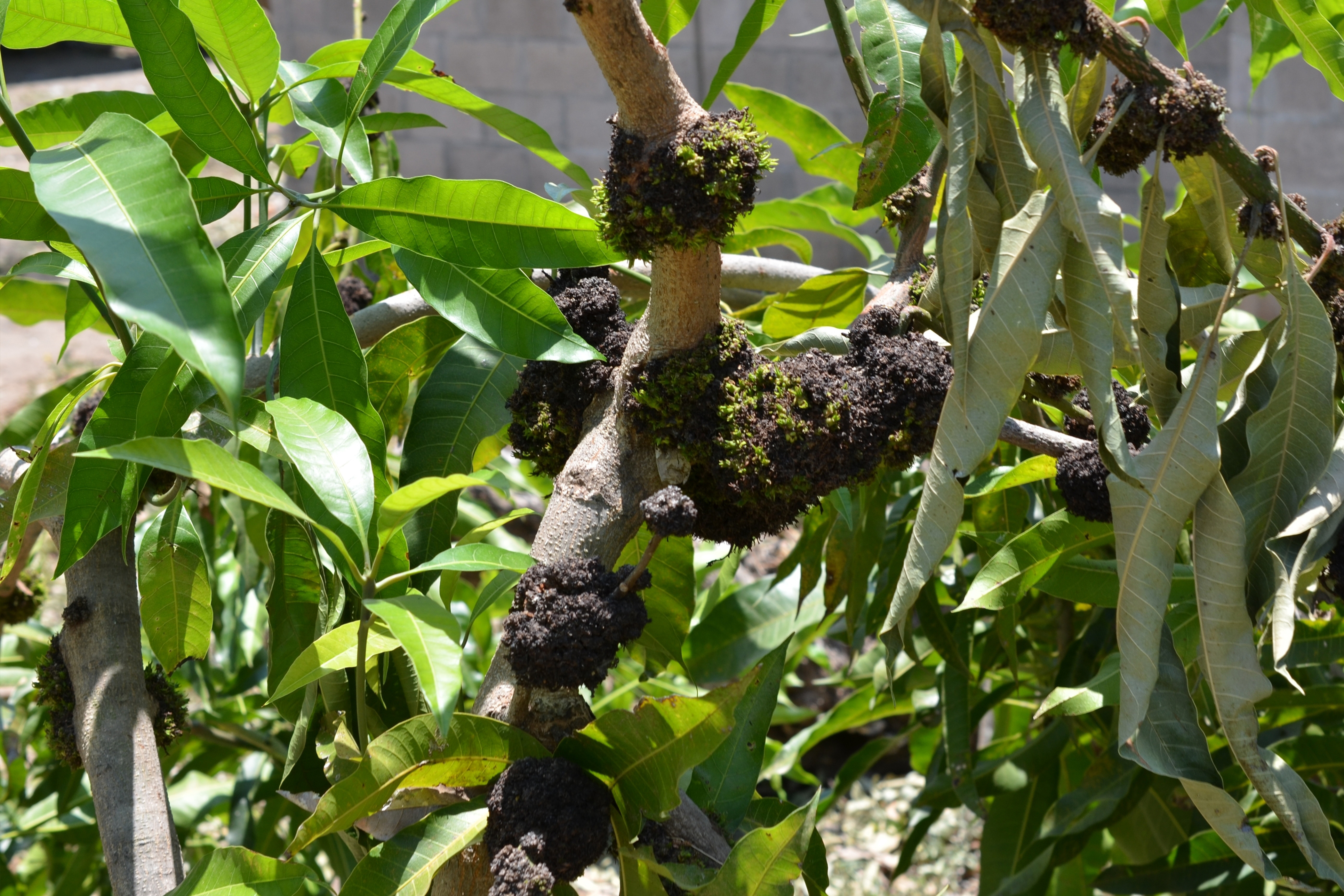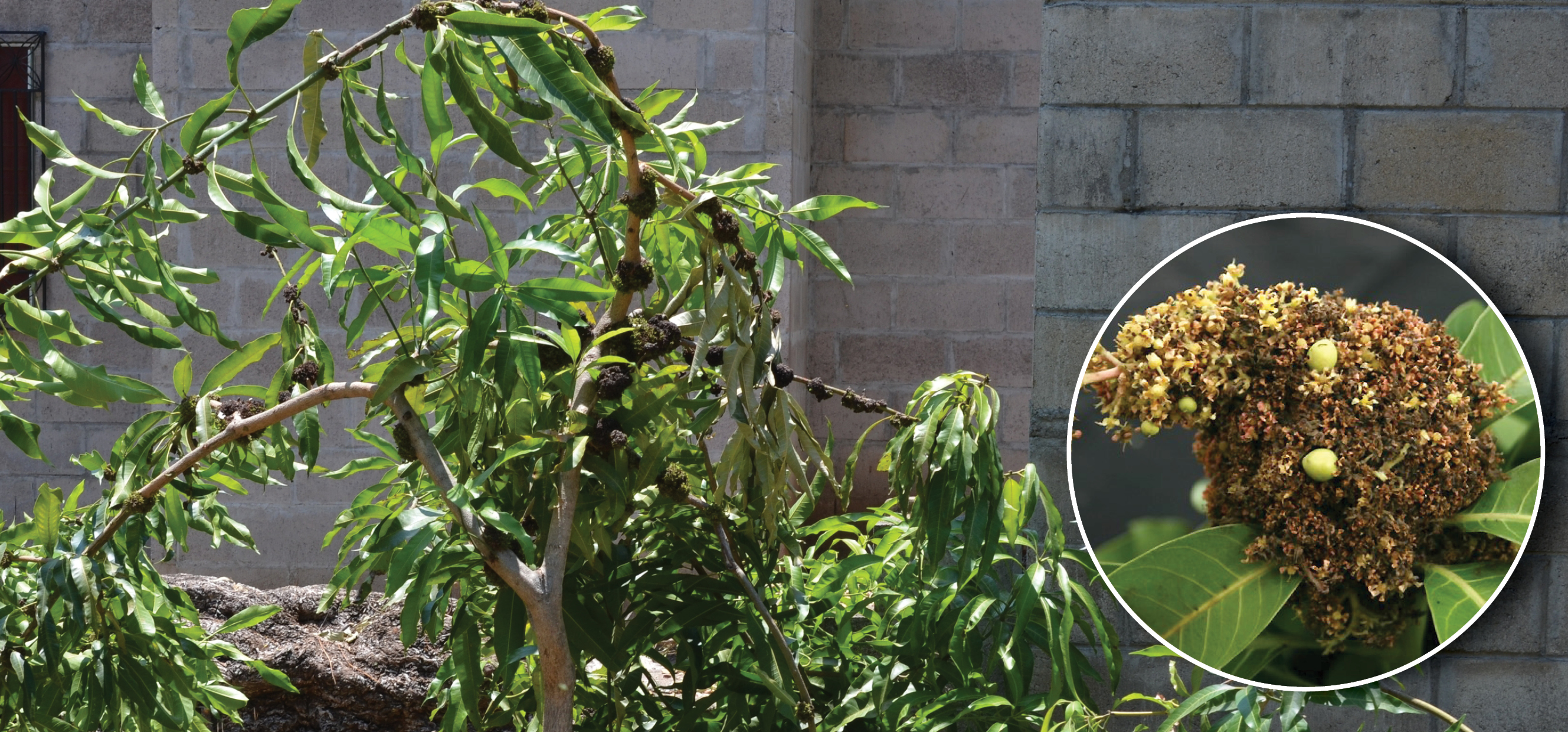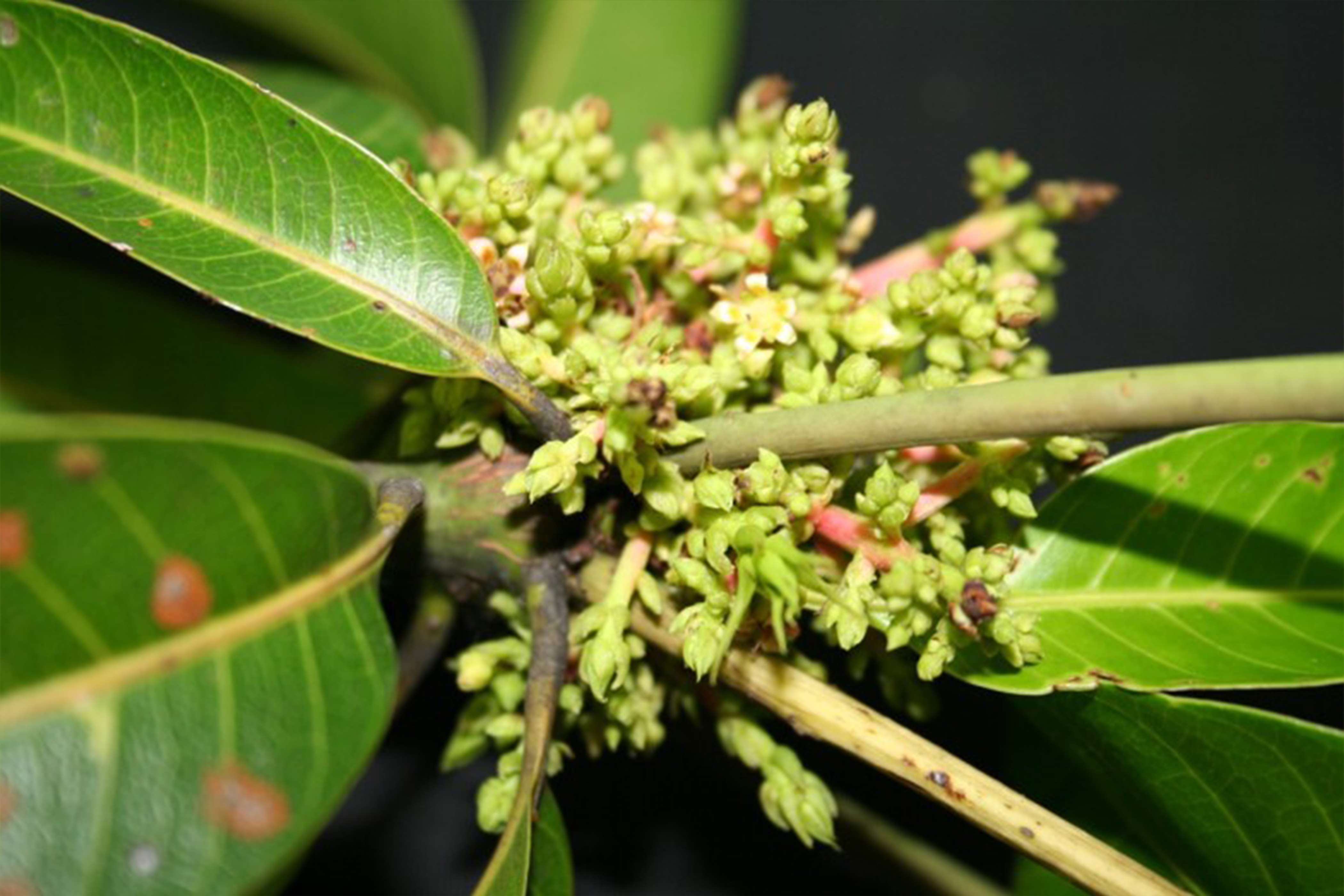
Mango malformation disease is a declared pest in WA
Mango malformation is not known to occur in WA and must be reported to the department if found or suspected to be present in WA.
Mango malformation disease is present in the Northern Territory, and it was successfully eradicated from an isolated incident in Queensland in 2009.

What is mango malformation disease?
Mango malformation disease is a disease of mangoes, caused by several species of the fungus Fusarium (including Fusarium mangiferae), that can cause significant yield losses.
About mango malformation disease
Mango malformation disease only infects mango trees.
- Flowers and shoots develop abnormally with stunted, compact growth.
- Shoots are tightly bunched and misshapen with shortened internodes.
- Flower stems are shortened, thickened and highly branched with 2-3 times more flowers than normal.
- Leaves sometimes grow in the flower head.


- Affected flowers do not usually set fruit, which reduces yield.
- Abnormal growth can stunt mango trees.
- The fungus infects emerging flower and shoot buds, then fungal spores are produced on infected plant parts.
- Spores can be spread by contaminated pruning equipment, air currents, rain splash and infected plant material falling from infected trees.
- Mango bud mite (Aceria mangiferae) is thought to assist spread of the disease within orchards.
- Mango malformation spreads longer distances with nursery stock and budwood.
- The disease is not spread via fruit or seeds.
- The disease can remain dormant for several years before showing symptoms.
Legal duty to report
Mango malformatino disease is not known to occur in WA.
Fusarium mangiferae is a declared pest under section 12 of the Biosecurity and Agriculture Management Act 2007.
This means that any person who finds or suspects the presence of mango malformation disease must report it to DPIRD.
Report suspected mango malformation disease
Early detection and eradication will help protect Western Australian mango growers. If you find or suspect the presence of mango malformation disease, report it in one of the following ways.
WA's freedom from mango malformation disease is supported by general and specific surveillance and specific import requirements to prevent its entry.
